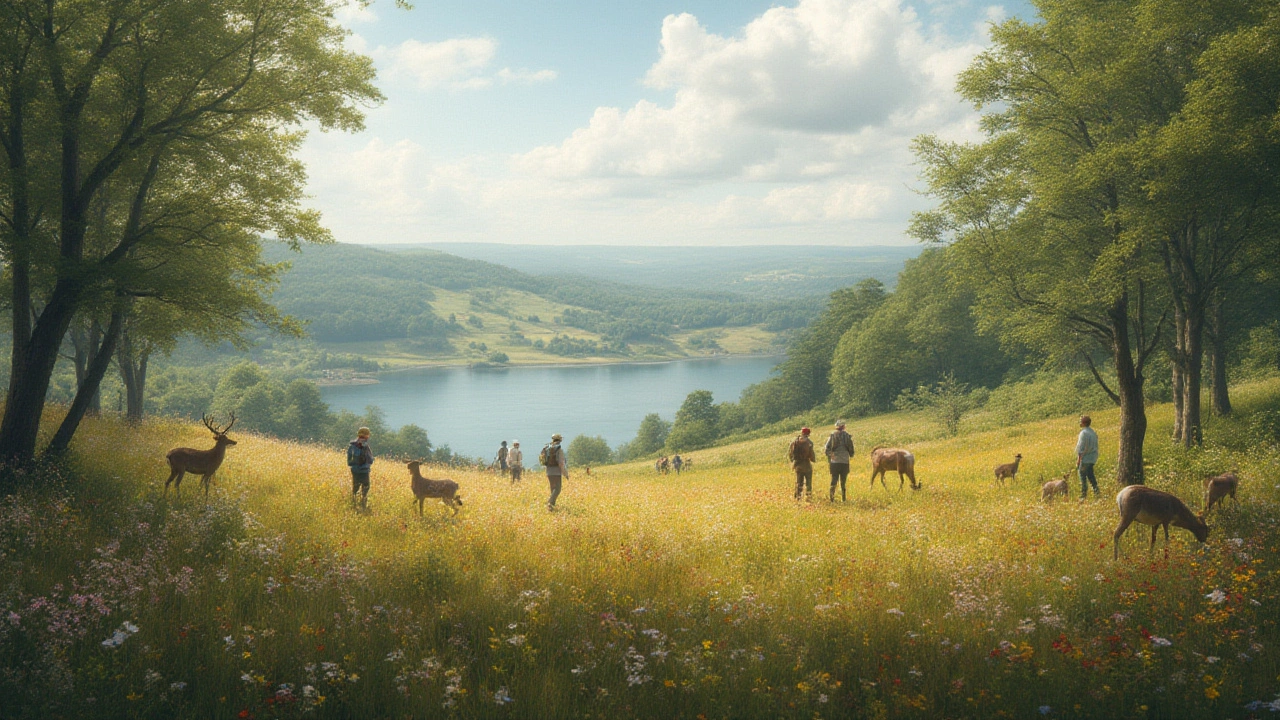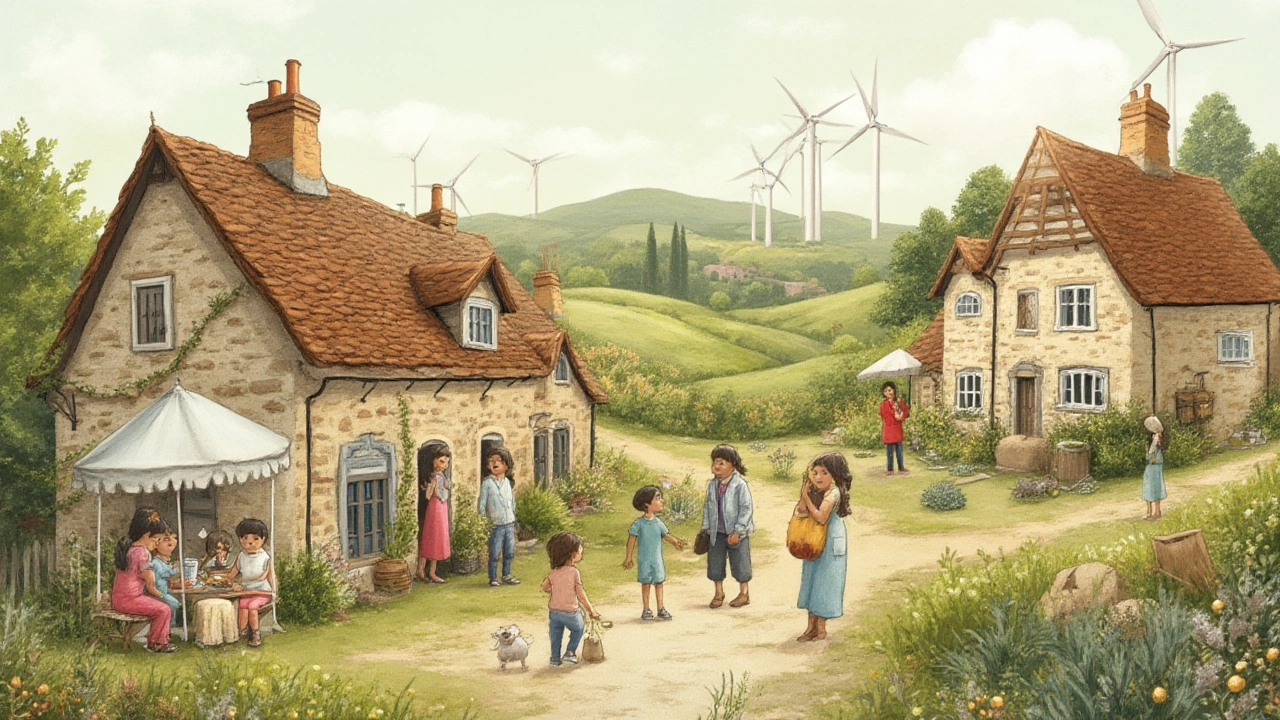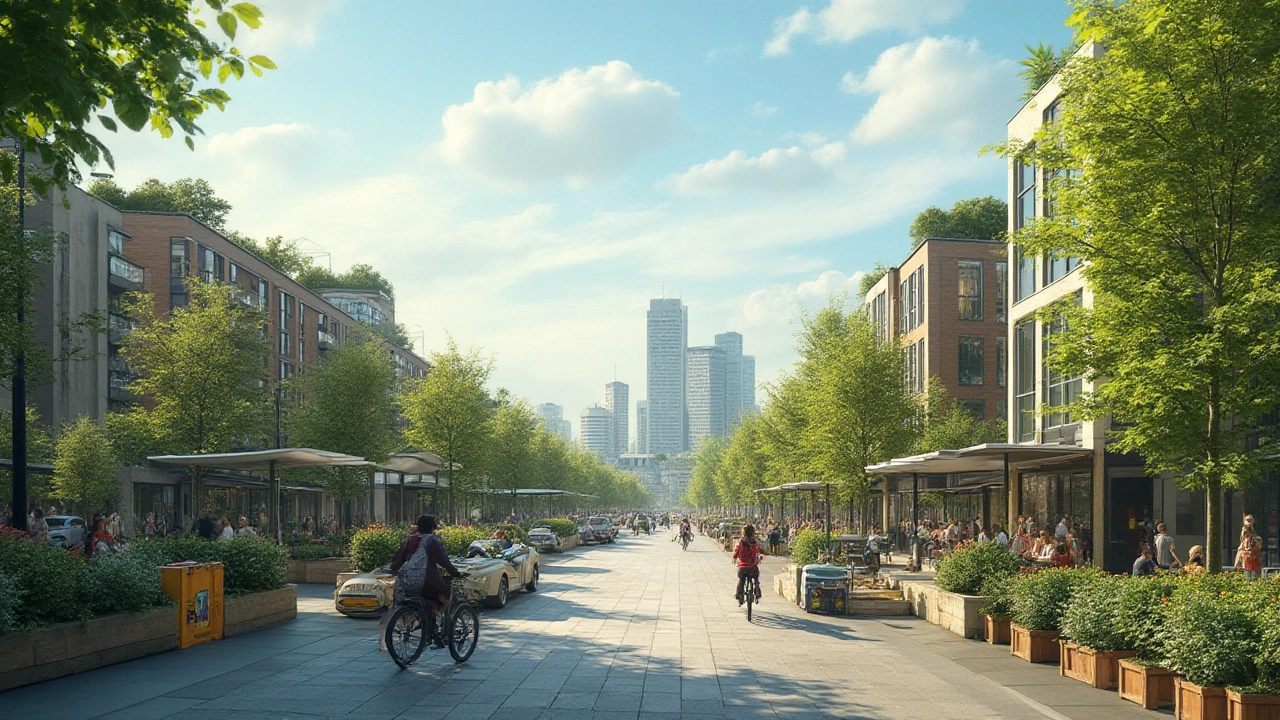Imagine a place where air smells like fresh rain, water is cleaner than you ever thought possible, and people live with nature, not just within it. Some corners of this planet feel almost surreal, like they’ve pressed pause on the rush to destroy and instead fast-forwarded to a future where the planet breathes easy. But what does it even mean for a place to be the “most eco-friendly” on earth? Is it about untouched wilderness, cities powered by the sun, or somewhere people actually live and thrive with next to zero impact on the environment? The answer is, it’s complicated and a little fascinating.
Defining Eco-Friendliness: Beyond the Buzzwords
We hear the words “eco-friendly” tossed around endlessly—from reusable coffee cups to entire countries competing for the greenest badge. But the real deal involves a lot more than recycling bins and bike lanes. Let's break down what makes a place truly fit the strong label of "eco-friendly places." To even be in the running, a place has to show big commitment in areas like clean energy, pollution control, wildlife protection, responsible waste management, and community involvement. It comes down to looking at the whole system, not just ticking a couple of green checkboxes. For places where people live, it’s about how daily life connects to the land, water, and climate—and whether that connection repairs, rather than damages, the earth.
One popular way experts look at this is the Ecological Footprint, a tool that measures how much land, water, and resources people use, compared to what the planet can actually regenerate. If a city or country uses fewer resources than it gives back, call that a win. Other experts point to the percentage of energy that comes from renewables. Spots that tap the sun, wind, or geothermal energy for almost everything—think Iceland, nearly 100% green power—score high. Plus, areas that keep forests, rivers, and wildlife surveyed, protected, and thriving, not bulldozed for condos or shopping malls, get bonus points.
Community is another part that’s easy to forget, but super important. Places where people pitch in, share rides, garden on rooftops, and support local growers help keep the chain of eco-impact short and sweet. Laws matter, too—plastic bag bans, wildlife corridors, incentives for solar—real change happens when rules push people to rethink daily habits. But that’s just the baseline. To really hunt for the “most eco-friendly,” you have to look beyond the slogans and papers, and see which places walk the talk at every level.
And if you think all roads lead to a far-flung pristine forest, think again. Some of the best examples are right under our noses, in cities making radical changes or small islands revolutionizing their future with micro-scale innovation. The idea isn’t about being perfect—it’s about constant, creative action, making eco-friendliness a living practice, not just a poster in someone’s office.

World’s Brightest Eco-Stars: Cities, Countries, and Wild Frontiers
Now, if you had to pick just one spot as the most eco-friendly, good luck—there’s no single winner. But a handful of places have shot so far ahead on sustainability, they deserve a close look.
Let’s talk about Iceland, because this one’s a favorite on all the green lists. Just picture nearly all its energy coming from geothermal vents and hydro, with hardly a whiff of coal or oil. The air is so crisp, some visitors describe it as “drinking the sky.” Houses are heated with hot water from deep underground, and people fish, farm, and even make skincare using local, renewable ingredients. Sure, the population is just under 400,000, but they’ve scaled their ideas up in a big way. You’ll even see a zero-waste store next to a family-run geothermal greenhouse. No wonder Reykjavik, the capital, is shooting for carbon-neutral status.
Then there’s Costa Rica. This little Central American country puts its money where its mouth is: More than 99% of its electricity comes from renewables. Since the late 1980s, over a quarter of its land has become national parks or protected reserves. The result? Forests teeming with howler monkeys, jaguars, and more birds than you can count—390 species in Monteverde alone. And the government keeps planting more trees than it cuts down; in fact, Costa Rica is one of the very few places on Earth to reverse forest loss. No wonder it’s called the “greenest country in the world” by the United Nations’ Happy Planet Index (check the table below for more fun data).
| Location | Renewable Energy (%) | Protected Land (%) | Air Quality (PM2.5 µg/m³) | Population |
|---|---|---|---|---|
| Iceland | 99%+ | ~25% | 5 | 376,000 |
| Costa Rica | 99%+ | 26% | 13 | 5.2 million |
| Bhutan | 100%* | 71% | 7 | 782,000 |
| New Zealand | 84% | 33% | 8 | 5.2 million |
| Freiburg, Germany | 50%+ | Urban | 12 | 230,000 |
*Bhutan generates more clean energy than it uses, exporting the rest.
Speaking of Bhutan, this tiny Himalayan kingdom goes even further. Not only does it generate all its energy from hydropower, but its constitution actually demands that at least 60% of the country stays forested forever. Right now, they’re at about 71%. Even cooler, Bhutan is famously “carbon negative,” meaning it sucks more carbon from the air than it produces. Picture fresh pine air and wild tigers—a fairy-tale mountain nation that quietly leads the world by example.
Now, if you think cities can’t be eco-friendly, you haven’t been to Freiburg, Germany. Known as the “Solar City,” this place packs more solar panels per capita than almost anywhere else, and public transport gets top priority over cars. There are even neighborhoods designed so kids can play and bikes can roll but cars stay out. They’ve proven cities don’t have to be toxic hives—urban life and clean living really can mix.
Let’s not forget New Zealand, either. Yes, it’s my backyard, but it punches well above its weight for green power, with 84% from renewables. Take a road trip here and you’ll pass wind farms, ancient forests, and coastline where sea lions nap beside surfers. The government’s been working to clean up rivers and cut single-use plastic, but the real secret is in how Kiwis care for their place: there’s a strong Māori influence in honoring the land, which makes sustainability a shared value, not just a political slogan.
What about places with little or no people? Antarctica takes the gold for untouched wilderness, but it’s not “eco-friendly” by design, just by being hard to reach. The Galápagos Islands, too, thrive with rules that protect unique creatures—from giant tortoises to marine iguanas—but even here, tourism stresses delicate systems. The lesson? There’s always a trade-off: the greener a place tries to be, the more challenges it faces from people who love it too much (or not enough).

Living Greener Anywhere: Steal the Secrets from the World’s Eco-Champions
So what can you actually do with all this? Honestly, you don’t have to move to a geothermal hut in Iceland or a farmhouse in Costa Rica. People in the world’s most eco-friendly places follow lots of small habits that work wonders anywhere, and you can copy their playbook starting today.
Let’s start with energy. If Iceland can go nearly 100% renewable, you can at least check where your electricity comes from—most cities now let you choose green power for your home. Got sunlight? Set up solar panels if you own your roof, or join a community solar garden if you don’t. Every kilowatt helps. And if heating’s your energy vampire, copy the Kiwis: insulate, seal gaps, and wear an extra jumper instead of blasting the thermostat.
When it comes to food, every eco-champion eats local. Bhutan grows most of its food in low-impact ways, and Costa Rica’s farmers supply neighbors with everything from mangoes to cacao. Your corner-grocer apples might have flown from the other side of the world, so try a weekly local produce box, or even grow some greens on your balcony. Plant-based meals lower emissions, too: even switching one dinner a week to beans instead of beef saves water, land, and tons of carbon.
- Shop farmer’s markets and buy seasonal, unpackaged food.
- Swap meat for plant-based meals a couple times a week.
- Join a community garden.
- Use leftovers—Bhutanese never waste rice!
Transport is a huge deal. Frieburg shows how cities can be cycle- and walk-friendly. If you’re in a car-clogged suburb, try public transport once a week, carpool with neighbors, or choose a bike for short trips. Even better, make a rule: for every drive, do at least one trip on foot or wheels. It adds up, and so does every flight you skip. For the travel lovers, offsetting your journey with a real, reliable scheme—like reforesting native trees or protecting local wetlands—helps make up for those unavoidable miles.
Waste is a sneaky enemy. Zero-waste shops, like those that popped up in Reykjavik, are now a global trend. Bring your own jars or bags, or challenge yourself to go “packaging-free” for a week. Kiwis have cut single-use plastic by more than 60% in three years just from community action and better laws. Start with one swap—a reusable water bottle or lunchbox—and build from there. Recycle, yes, but remember that cutting waste before it starts is even better.
If you want to get the community vibe of eco-friendly places like Costa Rica or Bhutan, find a likeminded crowd. Join a beach clean-up, support a local biodiversity project, or just volunteer for a local bush restoration day. Small acts, like tree-planting or protecting a tiny patch of wetland, ripple outwards. And don’t underestimate your voice: push for changes at school, work, or your city, from solar installs to pesticide bans. It works—a ban on single-use plastic bags in New Zealand began as a local campaign for better beaches.
Here are some take-home tips from places that get it right:
- Turn lights off, unplug chargers—every watt counts.
- Choose green energy if your power company offers it—the more people who switch, the faster the shift.
- Sort recycling better: contaminated loads often end up in landfill.
- Walk, ride, or take public transport wherever you can.
- Plant a tree—Kiwi wisdom!—even one makes a difference.
- Buy less, and choose quality that lasts.
- Get involved in local cleanups or conservation days.
Looking around at all these different faces of “eco-friendly,” it’s clear there’s no single perfect spot. Iceland, Costa Rica, Bhutan, Freiburg, and New Zealand all set the pace in different ways. The real lesson: take their best ideas, adapt them to your backyard, and remember the greenest place is often the one you help grow yourself.
